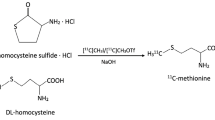Abstract.
Fluorine-18 2-deoxy-2-fluoro-D-glucose (FDG) accumulation in tumours has been well investigated, but much less is known regarding FDG accumulation in inflammatory lesions. In this study, we determined the effects of hypo- and hyperglycaemia on FDG uptake in inflammatory lesions of infectious and non-infectious origin and compared them with those in malignant tumours in rats, to provide a biological basis for differentiating malignant lesions from benign lesions by means of FDG-PET. Rats were inoculated with a suspension of allogenic hepatoma cells (KDH-8) or Staphylococcus aureus, or with turpentine oil into the left calf muscle. Two weeks after KDH-8 inoculation and 1 week after S. aureus and turpentine oil inoculations, the rats were divided into three subgroups: insulin-loaded (2 U/kg body weight, i.p.), glucose-loaded (1.2 g/kg body weight, p.o.) and control groups. Radioactivity in tissues was determined 1 h after i.v. injection of FDG. Intraperitoneal injection of insulin and oral administration of glucose induced hypoglycaemia and hyperglycaemia, respectively. In the control animals, tumours showed a level of FDG uptake which was 2.2 and 3.0 times higher than the levels in the inflammatory lesions induced by S. aureus and turpentine oil, respectively (P<0.0001). There was no significant difference in the level of FDG uptake between the two inflammatory lesions of infectious and non-infectious origin. Insulin loading significantly decreased the level of FDG uptake in tumours and in both types of inflammatory lesion to approximately one-half of the control values (P=0.001 in the tumour group and P<0.0001 in the two inflammatory lesion groups). In the glucose-loaded group, the level of FDG uptake in both types of inflammatory lesion decreased significantly to 50%–61% of the control value (P=0.0002 in the S.aureus group and P<0.0001 in the turpetine group), while the tumour uptake did not decrease significantly (86% of the control value) (P=NS). It is concluded that FDG uptake in both types of inflammatory lesion was significantly impaired in rats with hyperglycaemia induced by glucose loading, while tumour uptake of FDG was not significantly affected. These results indicate that glucose loading has greater effects on FDG uptake in inflammatory lesions than in tumours, providing a biological basis for differentiation of malignant lesions from benign lesions by FDG-PET in a clinical setting.
Similar content being viewed by others
Author information
Authors and Affiliations
Additional information
Received 11 December 2000 and in revised form 20 February 2001
Electronic Publication
Rights and permissions
About this article
Cite this article
Zhao, S., Kuge, Y., Tsukamoto, E. et al. Effects of insulin and glucose loading on FDG uptake in experimental malignant tumours and inflammatory lesions. Eur J Nucl Med 28, 730–735 (2001). https://doi.org/10.1007/s002590100517
Published:
Issue Date:
DOI: https://doi.org/10.1007/s002590100517




